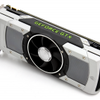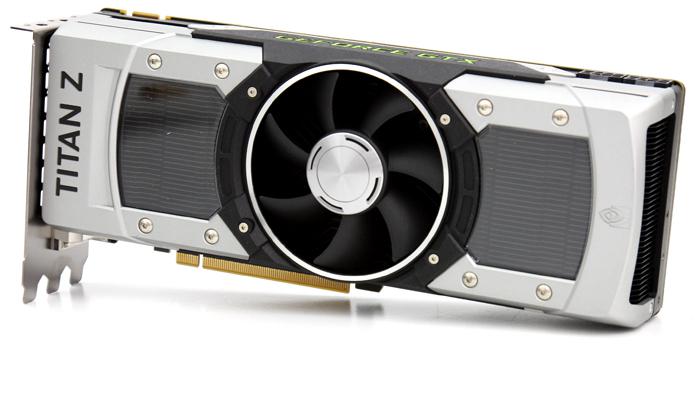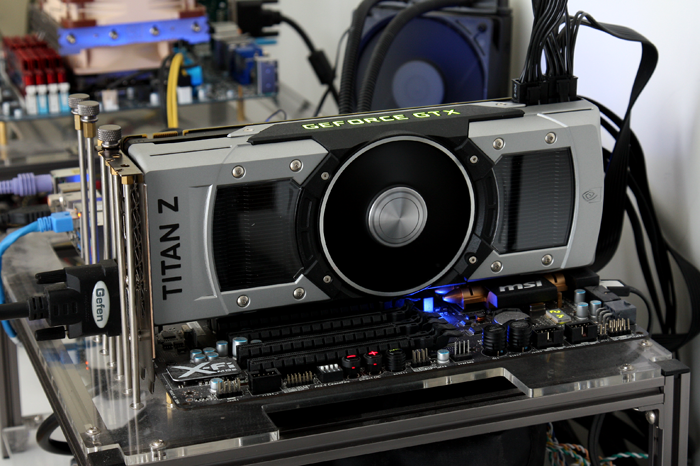Conclusion
Conclusion
The GeForce GTX Titan Z would have / could have been a successful product in the gaming segment if Nvidia didn't make two rather big mistakes. The first issue is heat. Nvidia tried to compensate for the tremendous amounts of heat that the two GPUs produce. Even a humongous 3-slot cooler could not save them. With their temperature target as such, a fairly low 705 MHz base-clock is the result. Secondly, the high pricing is just hideous of course. I mean, when released the GTX 690 was sub 1000 USD, as to why this card needs to cost 3000 USD beats me. Especially when you consider the AMD Radeon R9 295x2 can be had at 1499 USD and has liquid cooling included. When a product becomes this expensive people will need alternatives, hence we included the GTX 780 Ti 2-way SLI results. Two of such cards will cost you 1250 EUROs and it is the faster setup. If you like to step it up a notch to 6 GB graphics memory per GPU, two Titan Black cards would cost you 899 EUROs each, but I find the Titan Black cards to be inflated pricing wise as well. No, gaming wise your best "affordable" alternative remains to be two GTX 780 / 780 Ti cards. These comments shift a bit if you are not after the cards for gaming, yet need double precision for computing needs. Comments aside, the Titan Z obviously remains impressive hardware with two Kepler GPUs tied together, backed up by 12 GB of memory and 5760 processing cores in total.
Aesthetics
Admittedly it is a good looking card. The aluminum body is aesthetically pleasing, it has a strong body and the backplate plus overall construction make the product very sturdy. I am a little worried about weight though, this card is heavy and weighs almost 3 pounds and that's a lot of pressure on the PCIE slot. Then again, you do get to mount it securely with three screws :)
Cooling & Noise Levels
The NVIDIA reference coolers do their job well, they follow the temperature target of 80 Degrees C. You can discuss that number all you want, but the programmable temperature target works well for Nvidia. The end results on the default clock frequency is that the card remains at roughly 80 Degrees C whilst remain fairly silent for a dual-GPU based product. I mean under stress you can definitely hear airflow from the card but for a card oozing so much heat, it is very acceptable. On the topic of heat, the Titan Z exhausts lots of heat both inside and outside the chassis. After closing our benchmark sessions the room temperature had risen by two degrees in a 25 square meter room. And yeah, though the product manages heat really well, it is its conundrum. To meet that 80 Dgrees C temperature target the clock frequency needed to go down. Heat is the reason for the low clock frequency, nothing more nothing less. As such, IMHO Nvidia should have looked into liquid cooling. It would have allowed them to go high in clock frequencies and thus performance as well.
Power Consumption
The GK110B Kepler GPUs are rated as having a 250 Watt TDP, we measure that to be a little better though, roughly 225~245 Watts (under full stress) per GPU. At this performance level you are looking at a card that consumes 450 to 500 Watts, that is okay. We think an 850 Watt PSU would be sufficient. So while it's not great to have two GPUs consuming 500 Watts it could have been a lot worse really. Also let me state that we measure peak power consumption, the average power consumption is a good notch lower depending on GPU utilization.
Game Performance
Close but no cigar.
The GeForce GTX Titan Z would have been massively impressive if AMD hadn't released the Radeon R9 295x2. See, even at the low base clock frequency, the card manages to push out incredble performance. But often not at the level of the Radeon R9 295x2. In fact, at Ultra HD the Radeon R9 295x2 overall has the better gaming performance to offer. And it gets sooo much worse when you realize that the Radeon R9 295x2 is available at sub 1500 EUROs and that GTX Titan Z costs 2850 EUROs. No, your best alternative is to go with SLI, the GeForce GTX 780 (Ti) SLI in most scenarios will be 5 to 10% faster than the GTX Titan Z. And in retrospect, sure, Titan Z is overall an extremely fast card.
Overclocking
The card is clocked for you at 705 MHz with an allowance to boost towards 875 MHz. This GPU can take a baseclock of 800 MHz fairly easily really, but then quickly runs out of its power and temperature targets. We increased GPU voltage by 75 mV and by increasing the fan RPM significantly (up to the point where it was noisy) did keep temperatures down, and at that moment we could add another 150 Mhz into the GPU base clock. Our tweak made the GPU boost at roughly 1100 MHz (depending on temperature, power draw and load). This was the absolute max though as passing that frequency easily would get us into crashing problems. However, if properly cooled, that boost clock is interesting as immediately your performance goes up greatly.
Concluding
I knew in advance that the conclusion page would be a difficult one to write. I tried to find some sort of euphemism or analogy if you will to word the sentiment that is the GeForce GTX Titan Z. I ended up with Seinfeld. In fact, if you have noticed the first chapter title, you would have read 'Hello Newman'. Newman was the fat, slightly obtrusive character that Seinfeld didn't like but always was a friend of somehow. Somehow I have that feeling with the Titan Z. I do tend to like the product but the second I think about its pricing my eye-brows frown upon it. The overall performance is massive I mean let's face it, this is a beast of a garphics card. But it does remain slightly below par compared to the alternatives at hand. The card is running relatively nicely at 80 degrees C on the GPUs, it's silent enough... but dumps too much heat inside and outside the PC chassis. I mean, it's two Kepler GPUs tied together, backed up by 12 GB of memory and 5760 processing cores in total -- what's not to like would be my first reaction. Well yeah, I need to get back to pricing, 3000 USD / 2850 EURO is just too much by any standard. My advice would be for you to get two GTX 780 / 780 Ti or Titan / Titan Blacks and go SLI. No-matter how advanced you configure stuff you'll save a lot of money. Of course you could go team AMD as well, AMD has proven that enthusiast dual-GPU gaming doesn't have to cost an arm and a leg and then a kidney too. And as such, the Radeon R9 295x2 outclasses the Titan Z by a factor of two in pricing. In fact, I have seen them sell for as low as 1250 EUR I just realized, that's including liquid cooling, man. Nvidia emphasizes that both the GeForce GTX Titan Black and Titan Z are intended for the professional market, those who need double precision, meanwhile all Nvidia partners have launched and announced Titan Z as their ultimate gaming card. And that I am afraid will be the conclusion of this article, I cannot in good conscience recommend the GeForce GTX Titan Z. If it had been priced at the 1500 EURO mark things would have been very different, even then it would still be too expensive, the reality is that it remains to be an impressive product. But that price... it just doesn't make any sense.
That said, some serious thanks go out to Tones.be! As stated, Nvidia refuses to send out Titan Black and Titan Z samples, for obvious reasons. So we had to fall back to distribution and etail. Please give Tones.be a visit as lending out a component worth 2850 EUROs whilst getting heat and raised eye-browses from Nvidia was a gentlemanly thing for them to do.
Recommended Downloads
- Sign up to receive a notice when we publish a new article
- Or go back to Guru3D's front page



